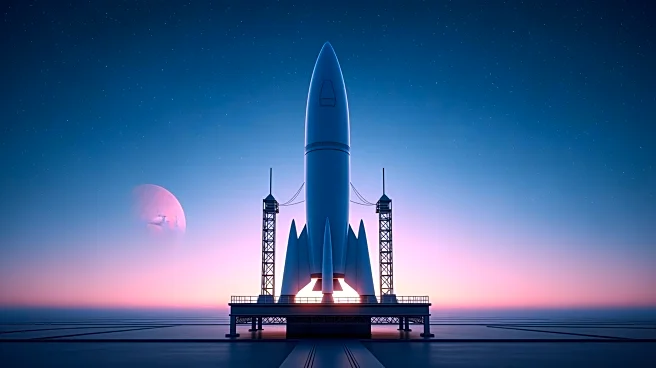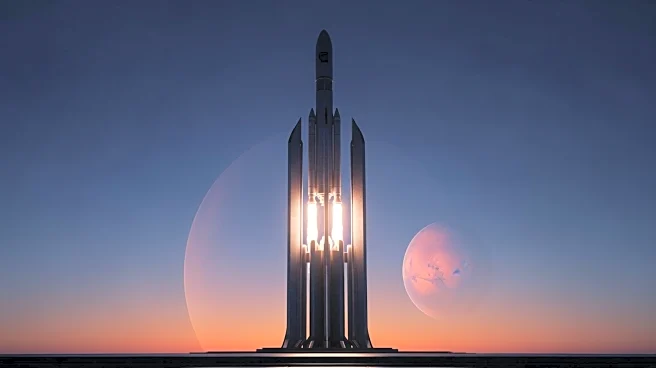What's Happening?
NASA has launched the ESCAPADE mission, which involves sending two small orbiters to Mars to study its atmosphere. The mission, launched on November 13, 2025, aboard a Blue Origin New Glenn rocket, aims
to advance the deep space capabilities of small spacecraft. The orbiters, named Blue and Gold, are designed to take simultaneous measurements, enhancing scientific outcomes. This mission is part of a trend towards miniaturization in the space industry, allowing for more efficient and cost-effective exploration. The orbiters will study Mars' magnetic field remnants and atmospheric interactions with solar wind, providing insights into the planet's atmospheric loss and its current state.
Why It's Important?
The ESCAPADE mission represents a significant step in space exploration, demonstrating the potential of small, low-cost spacecraft to conduct meaningful scientific research. By studying Mars' atmosphere and magnetic field, the mission could provide valuable data on the planet's history and its potential for past life. The use of smaller spacecraft also reflects a shift towards more agile and affordable space missions, which could democratize space exploration and enable more frequent missions. This approach may lead to faster technological advancements and a deeper understanding of our solar system.
What's Next?
The ESCAPADE mission will follow a new trajectory to Mars, utilizing gravitational forces to minimize fuel requirements. The orbiters will first travel to the L2 Lagrange point, collect solar data, and then use Earth's gravity to boost their journey to Mars. This trajectory allows for more flexible departure times, potentially benefiting future missions. The success of ESCAPADE could pave the way for similar missions, enhancing the frequency and scope of Mars exploration. The data collected will contribute to ongoing research into Mars' atmospheric dynamics and its implications for planetary science.
Beyond the Headlines
The ESCAPADE mission highlights the growing collaboration between commercial partners and NASA, showcasing a new era of space exploration. By leveraging commercial technologies, the mission demonstrates how public-private partnerships can reduce costs and increase innovation in space missions. This collaborative model may influence future space exploration strategies, encouraging more partnerships and investments in space technology. Additionally, the mission's focus on Mars' atmospheric loss could have implications for understanding planetary habitability and the conditions necessary for life.











